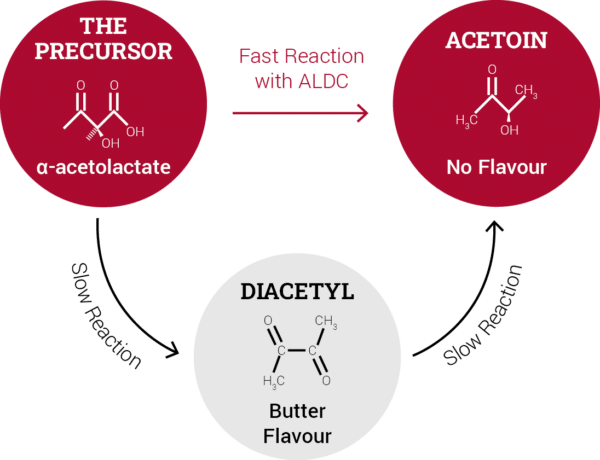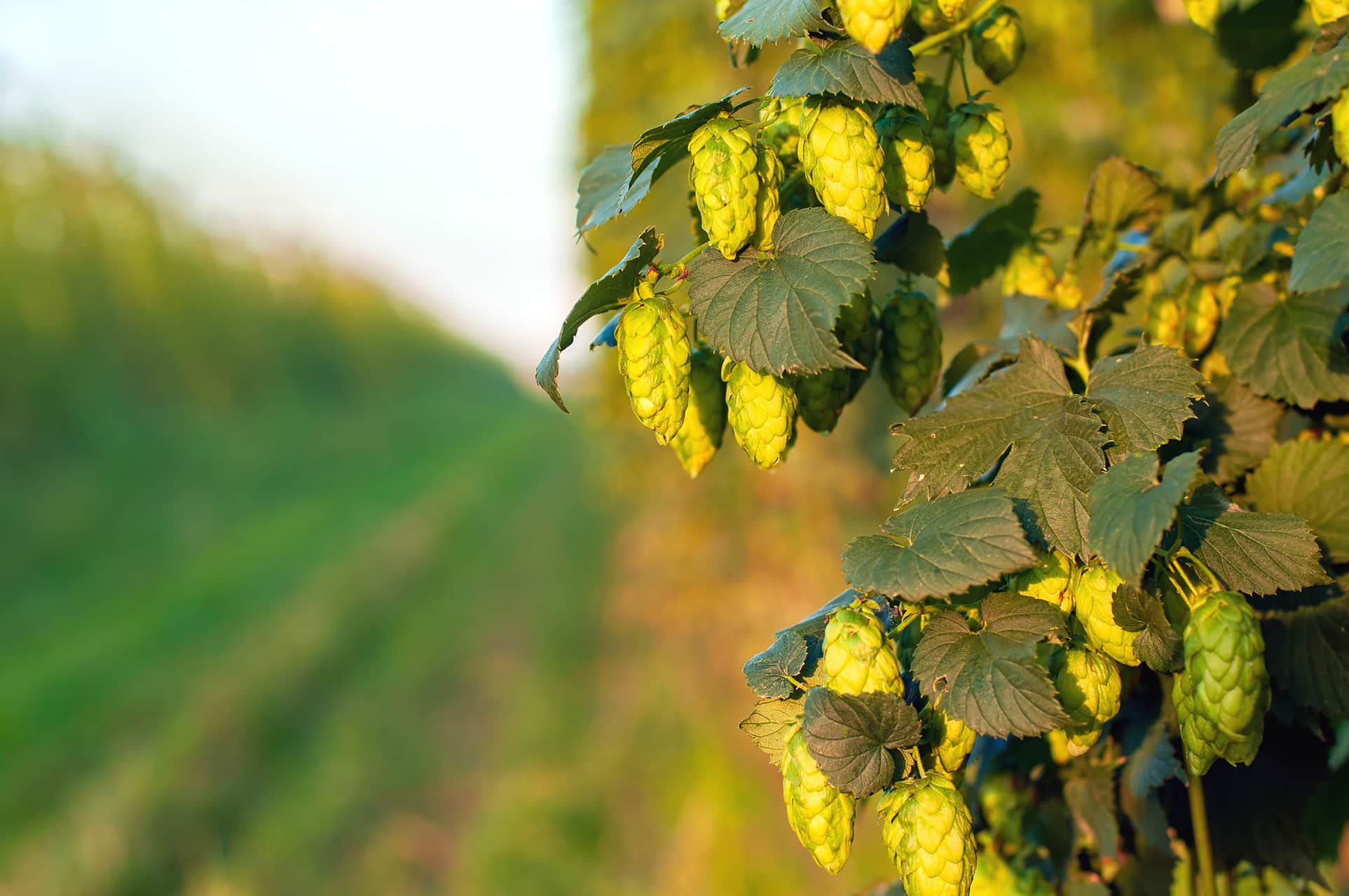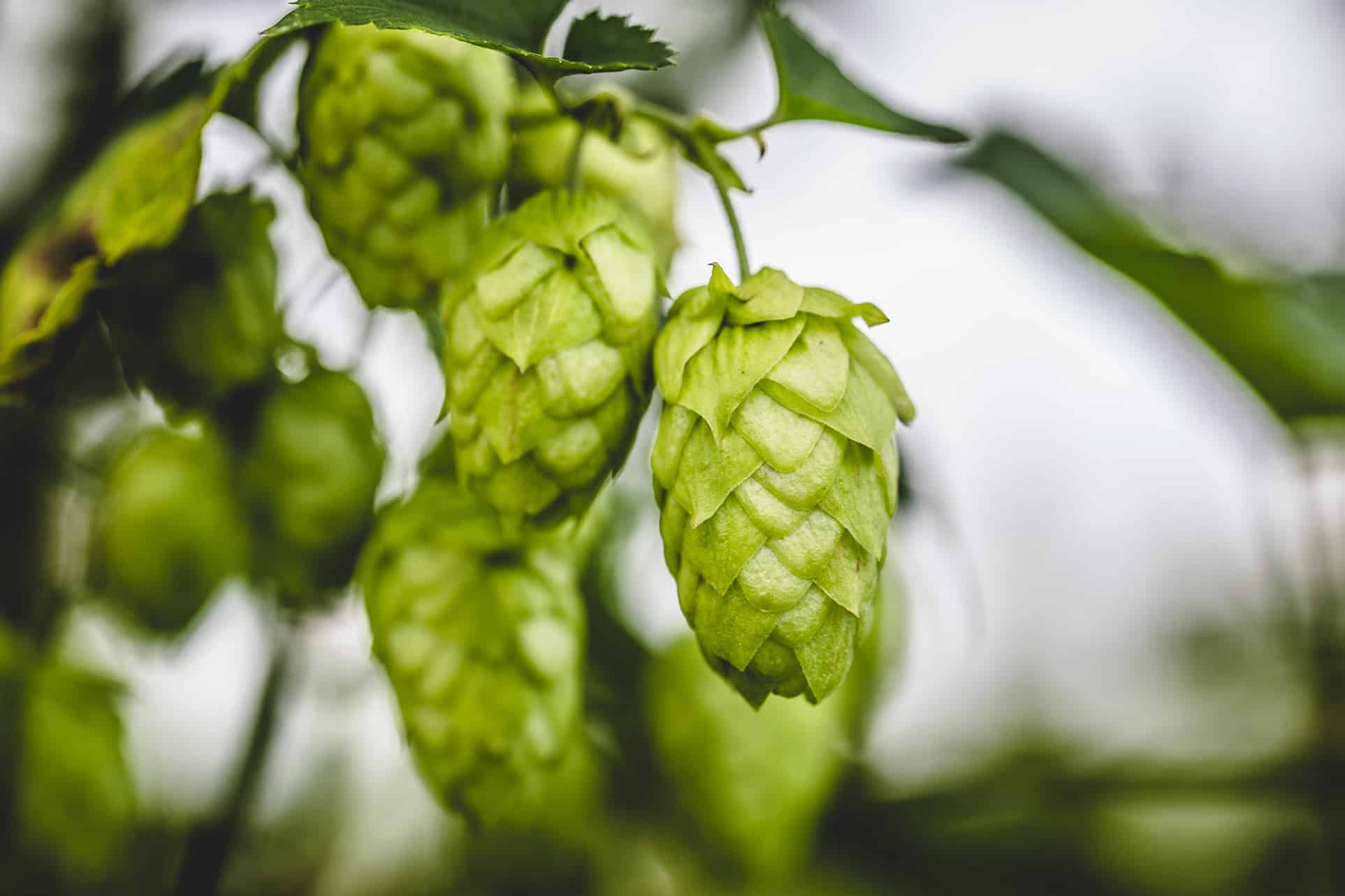ALDC FOR THOSE ABOUT TO HOP
ALDC uses in the brewery by Murphy and Son

Stephine Bindley
Murphy and Son | Technical Sales Manager
A Brewer’s Guide to Diacetyl: Detection, Prevention, and Control
Brewers and beer enthusiasts appreciate the incredible variety of flavours and aromas that can be achieved through dry hopping. However, one aroma compound that often flies under the radar is Vicinal Diketones (VDKs), which include Butane-2,3-Dione (Diacetyl) and Pentane-2,3-Dione.
These compounds are typically characterised by buttery, butterscotch, cream, and toffee notes. While they may pair well with snacks like popcorn, they aren’t typically sought after in beer production. Often perceived as an off-flavour, especially in pale lagers and hoppy ales, some breweries allow a certain level of Diacetyl in their specifications, viewing it as potentially desirable in specific beer profiles. For many brewers, controlling this flavour-active aroma is crucial to achieving the desired taste, though it can be challenging due to its low flavor threshold, often below 100 ppb.

To monitor VDKs, brewers can use a simple testing method:
- Take two 100 ml samples of beer from maturation.
- Cover both samples with foil or Petri-film.
- Leave one sample at room temperature.
- Heat the other sample to 65°C for 20 minutes and then cool it back to 20°C.
This heating process converts precursors into aromatic VDKs. If levels are unacceptable in either sample, further maturation may be required. When both samples exhibit acceptable aromas, the beer is typically ready for the next processing stage.
Although this test is useful for monitoring Diacetyl levels and maturation needs, it relies heavily on the sensory skills of the tasting team. Variability in individual sensitivities, influenced by factors such as colds, food consumption, smoking, and even time of day, can affect results. The most accurate assessment comes from gas chromatography (GC) analysis, available only in highly equipped breweries.
To help manage VDKs more effectively, many brewers, particularly in the U.S., are using the enzyme alpha-acetolactate-decarboxylase (ALDC). This enzyme acts as a preventive measure:
- Reduces Diacetyl Production: Minimises the formation of VDKs during fermentation.
- Shortens Maturation Time: Allows for quicker turnaround in the brewing process.
- Ensures Flavour Consistency: Helps maintain the desired flavour profile in the beer.
However, brewers should be mindful of “hop creep,” a phenomenon where dry hopping, aided by the low levels of enzymatic activity in hops, can produce additional fermentable sugars over time. This renewed sugar availability can trigger yeast activity and VDK production.
Implementing ALDC can help prevent VDKs from becoming a recurring issue in dry-hopped beers. It’s important to note that VDKs can also arise from microbial contamination, making it essential to maintain strict hygiene protocols in addition to using ALDC. The enzymatic activity from hops also makes controlling attenuation critical, especially when secondary fermentation is involved.
A helpful attenuation limit test can be conducted on wort before fermentation:
- Fill a sanitized 750 ml flask with wort.
- Overpitch with a heaped teaspoon of the brewing yeast culture.
- Cover with a cotton stopper, shake vigorously, and store at room temperature (~20°C).
- Measure the gravity every 24 hours while intermittently shaking or using a stirrer.
- Once gravity stabilizes for 48 hours, the attenuation limit has been reached.
This information can aid in modifying the mashing regime to optimise wort fermentability.







